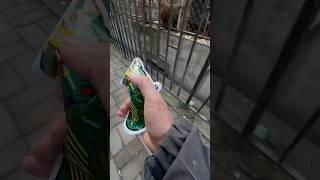
Hands-On Lab Training for CompTIA Security+ | Gain Practical Proficiency | route
In this lesson, we will use the 'route' utility to assess organizational security.
We are in the route portion of the video series. This lesson is part of a video series that prepares you for the hands-on portion of the CompTIA Security+ exam and is designed to give you hands-on experience with the Operations and Incident Response section of the exam. So, what is 'route'?
►What: The 'route' command in Linux is a networking utility used to display or manipulate the IP routing table.
►Who: The 'route' command is used by system administrators, network engineers, or users with sufficient privileges to manage the network configuration on a Linux system.
►When: The 'route' command can be used whenever there is a need to view or modify the IP routing table on a Linux system, which may occur during network setup, troubleshooting, or changes in network connectivity.
►Where: The 'route' command is executed within the Linux terminal or shell, and its effects are applied to the local system's IP routing table.
►Why: The 'route' command is used to manage the routing table, which is essential for determining the path that network packets take from their source to their destination. It helps in controlling the flow of network traffic and ensuring proper communication between devices on a network.
►How: To use the 'route' command, open a terminal in Linux and type "route" followed by specific options and arguments to perform various tasks, such as displaying the current routing table, adding new routes, modifying existing routes, or deleting routes. The exact syntax and options vary depending on the specific use case. Use "route --help" to get information about available options and their usage. The rest of the 'how' is what this video is all about, so let's get into it!
To get started, grab the companion guide from the link in the show notes below. Also, if you like this content, make sure to subscribe to the channel so you won't miss any new videos.
Also, please be sure to visit https://www.frantzmerine.com/resources to download a free copy of the companion guide used in this lesson.
We are in the route portion of the video series. This lesson is part of a video series that prepares you for the hands-on portion of the CompTIA Security+ exam and is designed to give you hands-on experience with the Operations and Incident Response section of the exam. So, what is 'route'?
►What: The 'route' command in Linux is a networking utility used to display or manipulate the IP routing table.
►Who: The 'route' command is used by system administrators, network engineers, or users with sufficient privileges to manage the network configuration on a Linux system.
►When: The 'route' command can be used whenever there is a need to view or modify the IP routing table on a Linux system, which may occur during network setup, troubleshooting, or changes in network connectivity.
►Where: The 'route' command is executed within the Linux terminal or shell, and its effects are applied to the local system's IP routing table.
►Why: The 'route' command is used to manage the routing table, which is essential for determining the path that network packets take from their source to their destination. It helps in controlling the flow of network traffic and ensuring proper communication between devices on a network.
►How: To use the 'route' command, open a terminal in Linux and type "route" followed by specific options and arguments to perform various tasks, such as displaying the current routing table, adding new routes, modifying existing routes, or deleting routes. The exact syntax and options vary depending on the specific use case. Use "route --help" to get information about available options and their usage. The rest of the 'how' is what this video is all about, so let's get into it!
To get started, grab the companion guide from the link in the show notes below. Also, if you like this content, make sure to subscribe to the channel so you won't miss any new videos.
Also, please be sure to visit https://www.frantzmerine.com/resources to download a free copy of the companion guide used in this lesson.
Комментарии:
Hands-On Lab Training for CompTIA Security+ | Gain Practical Proficiency | route
Hands-On Lab Training for CompTIA Security+ Exam
Турция хочет вступить в БРИКС: что задумал Эрдоган?
DW на русском
Хроники Хаоса Синергия Стихий ивент
Хроники Хаоса Александр Ларин Hero-Wars
Перезалив Карпаты до 100 км/ч. 1 серия
Babzor.ru
A Real City Planner Tries Building a New City in Anno 1800!
City Planner Plays
Yuki x Kokkoro / Princess Connect Re:Dive AMV - Skies
Andromeda Florence


























